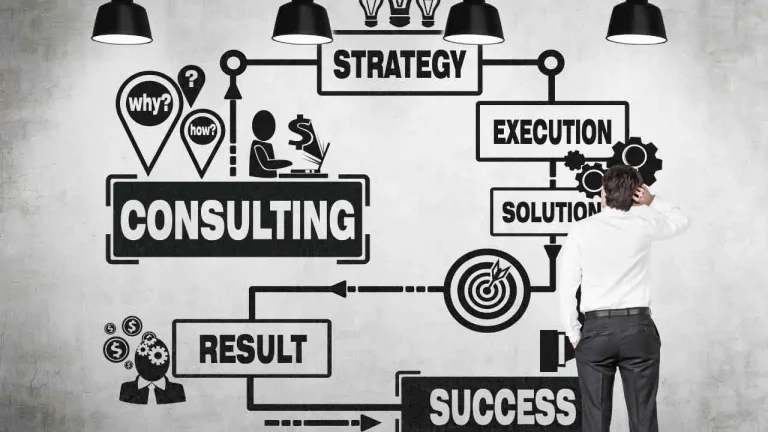How to Start a Small Business: A Step-by-Step Beginner’s Guide

Introduction
Starting a small business is an exciting yet daunting endeavor for aspiring entrepreneurs. The dream of turning a passion or idea into a thriving enterprise is within reach, but the process can feel overwhelming without a clear roadmap. Many beginners struggle with where to begin, how to navigate legal requirements, or how to secure funding, often leading to costly mistakes or missed opportunities. This comprehensive guide on how to start a small business provides a step-by-step approach to help you launch your venture with confidence. By following these actionable steps, you’ll address common challenges, build a solid foundation, and position your business for long-term success.
Step 1: Define Your Business Idea
The first step in how to start a small business is identifying a viable business idea. A strong idea aligns with your skills, passions, and market demand. Begin by brainstorming what products or services you can offer. Ask yourself: What problem can I solve? Who is my target audience? For example, if you’re passionate about fitness, you might consider opening a gym or offering online coaching.
Conduct thorough market research to validate your idea. Use tools like Google Trends, surveys, or competitor analysis to gauge demand and identify gaps in the market. According to the U.S. Small Business Administration (SBA), businesses that conduct market research are 20% more likely to succeed in their first year. This step ensures your idea has a solid foundation before you invest time and money.
Step 2: Create a Business Plan
A well-crafted business plan is the blueprint for how to start a small business. It outlines your goals, strategies, and financial projections, serving as a roadmap for growth and a tool to attract investors. Your business plan should include:
- Executive Summary: A brief overview of your business, mission, and vision.
- Market Analysis: Insights into your industry, target market, and competitors.
- Products or Services: A detailed description of what you’re offering.
- Marketing Strategy: How you’ll attract and retain customers.
- Financial Plan: Budget, funding needs, and revenue projections.
- Operational Plan: Day-to-day operations, including staffing and logistics.
The SBA reports that businesses with a written plan are twice as likely to succeed. Use free templates from platforms like SCORE or Bplans to streamline the process. Update your plan regularly to reflect changes in your business or market conditions.
Step 3: Choose a Business Name and Structure
Selecting a memorable and unique business name is critical for branding and legal purposes. Ensure the name reflects your business’s identity and is available as a domain for your website. Check trademark databases and domain registries like GoDaddy or Namecheap to avoid conflicts.
Next, choose a legal structure for your business, such as a sole proprietorship, partnership, LLC, or corporation. Each structure has different tax, liability, and operational implications. For instance, an LLC offers liability protection and tax flexibility, making it a popular choice for small businesses. Consult with a legal advisor or use services like LegalZoom to ensure compliance with state regulations.
Step 4: Register Your Business and Obtain Licenses
Once you’ve chosen a name and structure, register your business with the appropriate state authorities. In the U.S., this typically involves filing paperwork with your state’s Secretary of State office. You’ll also need an Employer Identification Number (EIN) from the IRS for tax purposes, which is free and can be obtained online.
Research federal, state, and local licenses or permits required for your industry. For example, a food truck business may need health permits, while a consulting firm may require professional licenses. The SBA’s website offers a free tool to identify necessary permits based on your location and industry.
Step 5: Secure Funding for Your Small Business
Funding is often a major hurdle in how to start a small business. Assess your startup costs, including equipment, inventory, marketing, and operational expenses. Common funding options include:
- Personal Savings: Using your own funds to minimize debt.
- Small Business Loans: SBA loans, like the 7(a) program, offer low-interest financing.
- Grants: Free funding for specific industries, such as women-owned or minority-owned businesses.
- Crowdfunding: Platforms like Kickstarter or Indiegogo allow you to raise funds from supporters.
- Investors: Pitch to angel investors or venture capitalists for equity funding.
Create a detailed budget to track expenses and ensure financial discipline. According to a 2023 survey by Fundera, 43% of small businesses fail due to cash flow issues, so prioritize financial planning from the start.
Step 6: Set Up Business Finances
Proper financial management is essential for sustainability. Open a separate business bank account to keep personal and business finances distinct. This simplifies tax filing and enhances professionalism. Choose a bank with low fees and small business-friendly services, such as Chase or Bank of America.
Select accounting software like QuickBooks or Wave to track income, expenses, and taxes. If you’re not confident in handling finances, consider hiring a certified accountant. Accurate bookkeeping ensures compliance and provides insights into your business’s financial health.
Step 7: Build Your Brand and Online Presence
A strong brand sets your business apart in a competitive market. Develop a logo, color scheme, and tagline that resonate with your target audience. Tools like Canva or Fiverr can help create professional branding on a budget.
Your online presence is equally important. Build a user-friendly website using platforms like Wix, Squarespace, or WordPress. Optimize your site for search engines by incorporating keywords like how to start a small business naturally into your content. For example, include a blog with tips for entrepreneurs to drive traffic and establish authority.
Leverage social media platforms like Instagram, LinkedIn, or TikTok to engage with your audience. According to Hootsuite, businesses with an active social media presence see 24% higher customer retention. Post consistently and use analytics to refine your strategy.
Step 8: Develop a Marketing Strategy
Effective marketing drives customer acquisition and growth. Start by identifying your target audience’s demographics, preferences, and pain points. Then, create a multi-channel marketing plan that includes:
- Content Marketing: Publish blogs, videos, or podcasts to educate and attract customers.
- Email Marketing: Use tools like Mailchimp to send newsletters and promotions.
- Social Media Ads: Run targeted ads on platforms like Facebook or Google Ads.
- Local SEO: Optimize your Google Business Profile to attract local customers.
Track your marketing efforts using tools like Google Analytics to measure ROI. A 2024 HubSpot report found that businesses with a defined marketing strategy generate 3x more leads than those without.
Step 9: Launch Your Business
With preparations complete, it’s time to launch. Host a grand opening event, either in-person or online, to generate buzz. Offer promotions, such as discounts or giveaways, to attract initial customers. Announce your launch on social media and through email campaigns to maximize reach.
Monitor customer feedback during the launch phase to identify areas for improvement. Use tools like SurveyMonkey to collect insights and ensure a positive customer experience.
Step 10: Scale and Adapt
Once your business is operational, focus on growth and adaptability. Monitor key performance indicators (KPIs) like revenue, customer acquisition cost, and retention rates. Reinvest profits into areas like product development or marketing to fuel growth.
Stay informed about industry trends and customer preferences. For example, if you run an e-commerce store, consider adopting new technologies like AI-driven personalization to enhance the shopping experience. According to McKinsey, businesses that adapt to market changes are 30% more likely to sustain long-term growth.
Common Challenges and How to Overcome Them
Starting a small business comes with challenges. Here are some common issues and solutions:
- Lack of Funding: Explore microloans or bootstrap by starting small.
- Time Management: Use tools like Trello or Asana to prioritize tasks.
- Competition: Differentiate your business through unique value propositions or superior customer service.
- Regulatory Compliance: Work with a legal advisor to ensure all requirements are met.
Tips for Long-Term Success
- Network: Join local chambers of commerce or online communities like Reddit’s r/smallbusiness.
- Upskill: Take free courses on platforms like Coursera or Udemy to enhance your entrepreneurial skills.
- Customer Focus: Prioritize exceptional customer service to build loyalty.
Conclusion
Starting a small business is a rewarding journey that requires careful planning, dedication, and adaptability. By following this step-by-step guide on how to start a small business, you can navigate the complexities of entrepreneurship with confidence. From defining your idea to launching and scaling, each step builds a foundation for success. Stay focused, leverage available resources, and remain open to learning from challenges. With persistence and strategic execution, your small business can thrive in today’s competitive market. Begin today, and take the first step toward turning your entrepreneurial vision into reality.






